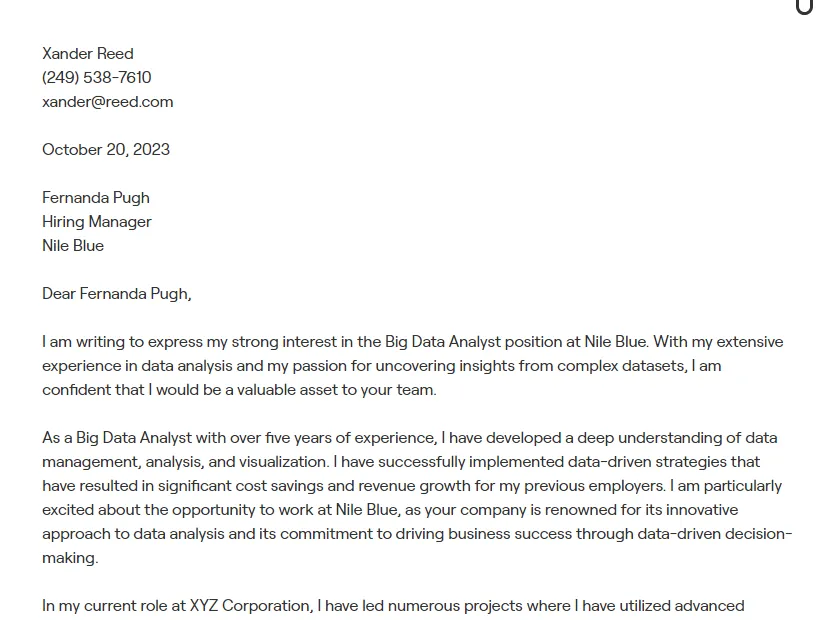Understanding the Data Analyst Cover Letter
A data analyst cover letter is your first impression on a potential employer. It’s your opportunity to showcase your skills, experience, and passion for data analysis. Unlike a resume, which is a summary of your qualifications, a cover letter allows you to tell a story, connect your skills to the specific job requirements, and express your enthusiasm for the role and the company. Crafting a compelling cover letter can significantly increase your chances of landing an interview and ultimately, the job. A well-written cover letter demonstrates your communication skills, attention to detail, and ability to articulate your value. It’s a chance to differentiate yourself from other applicants and make a memorable impression.
Key Components of a Data Analyst Cover Letter
A strong data analyst cover letter follows a structured format that highlights your key qualifications and demonstrates your understanding of the role. It’s crucial to include specific details and examples that support your claims. A well-structured cover letter typically includes several essential elements. Each component plays a vital role in conveying your suitability for the position. This section will break down each component and explain how to create a comprehensive cover letter.
Header & Contact Information
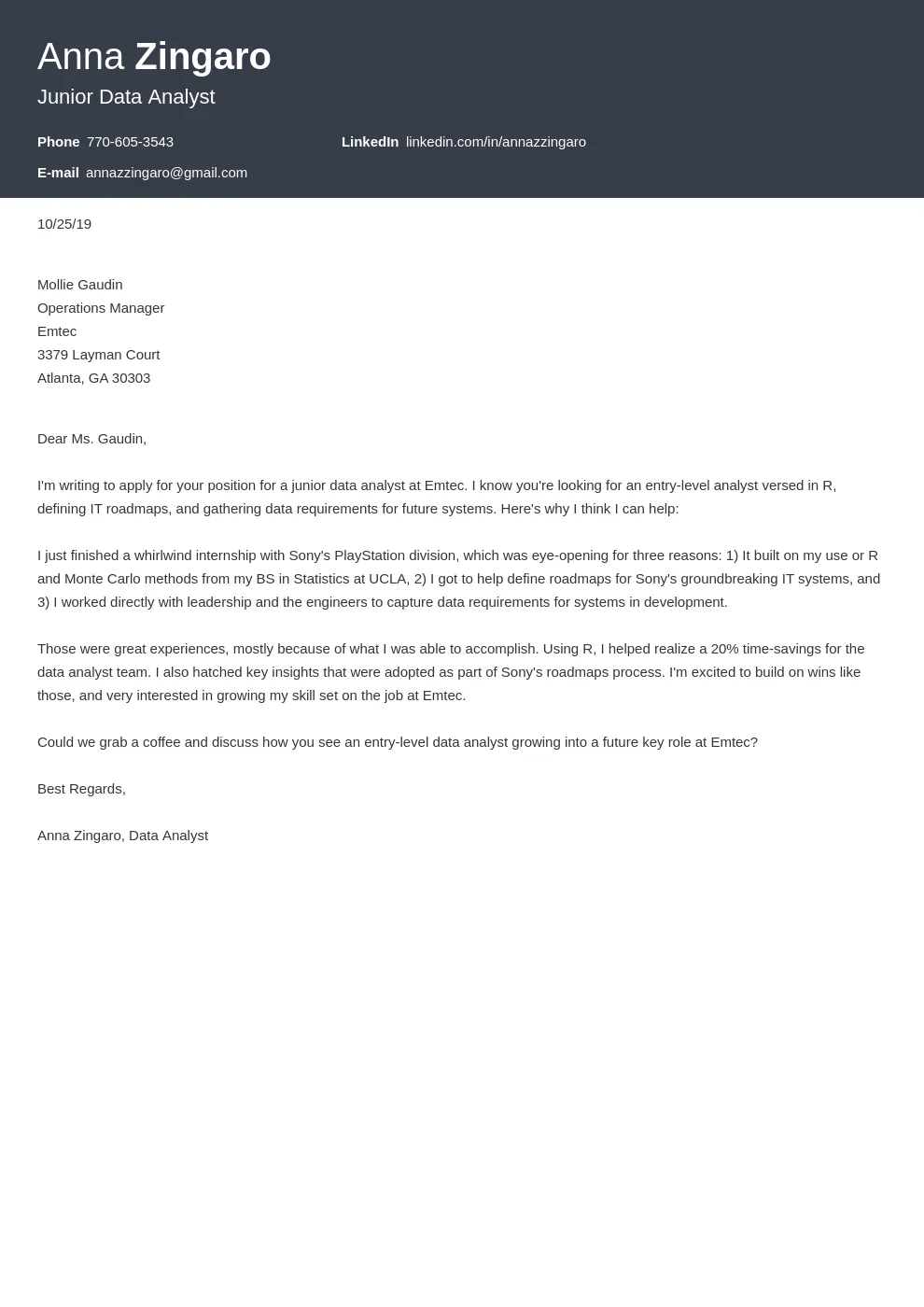
Start with a professional header. Include your full name, address, phone number, and professional email address. Ensure the email address is professional and easy to read. It’s also common practice to include the date and the hiring manager’s name (if known) and the company address. The header sets the tone for the entire letter and ensures the hiring manager can easily contact you. Verify all information for accuracy before sending.
The Importance of a Compelling Introduction
The introduction is your first chance to grab the reader’s attention. State the position you are applying for and where you found the job posting. Briefly highlight your key qualifications and express your enthusiasm for the role and the company. Avoid generic openings; instead, aim for a sentence or two that immediately captures the reader’s interest. For example, you might mention a specific project you worked on or a skill that aligns with the job requirements. The introduction sets the stage for the rest of your cover letter and encourages the hiring manager to continue reading. Make sure your introduction is concise and to the point.
Highlighting Your Data Analyst Skills
The body of your cover letter should detail your skills and experience, demonstrating how they align with the job description. The key is to show, not just tell. Instead of simply listing your skills, provide specific examples of how you’ve used those skills to achieve results. Break down your skills into categories such as technical, analytical, and soft skills. The following sections will delve deeper into the skill categories for the best cover letter.
Technical Skills
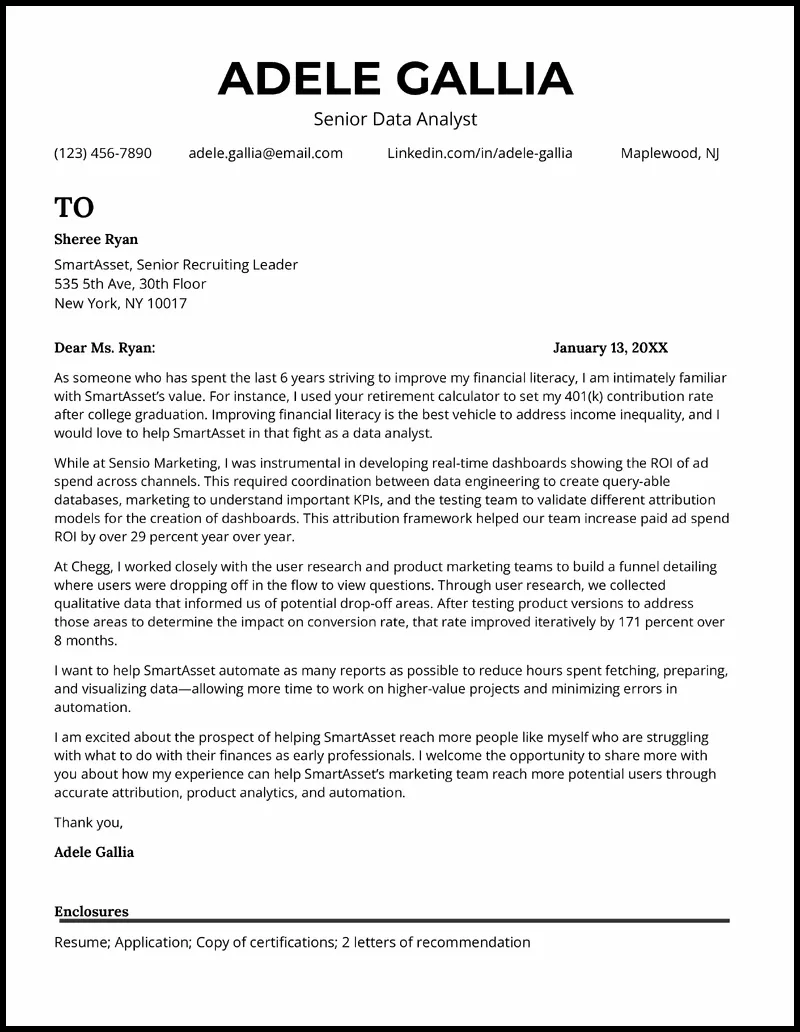
List the technical skills relevant to the data analyst position. This includes programming languages (Python, R, SQL), data visualization tools (Tableau, Power BI), and data manipulation software. For each skill, provide a brief example of how you have used it in a project or role. For instance, if you mention SQL, you could describe how you used it to query a large dataset and extract specific insights. Be specific about the tools and technologies you’re proficient with. This will help the hiring manager quickly assess your technical capabilities. Remember to tailor your list to the job description.
Analytical Skills
Highlight your analytical skills, such as data analysis, statistical modeling, and problem-solving. Describe projects where you have used these skills to identify trends, patterns, and insights from data. Quantify your achievements whenever possible. For example, you might describe how you improved the accuracy of a predictive model by a certain percentage or how you identified a key metric that led to a business improvement. Your ability to analyze data and generate actionable insights is critical for a data analyst, so make sure this section is strong.
Communication & Soft Skills
Data analysts need strong communication and soft skills. Mention your ability to communicate complex data findings to both technical and non-technical audiences. Provide examples of presentations, reports, or other communication materials you’ve created. Soft skills, such as teamwork, problem-solving, and attention to detail, are also essential. Describe situations where you’ve collaborated with others, solved a complex problem, or ensured the accuracy of your work. Demonstrate that you’re a well-rounded professional who can effectively work in a team and communicate findings.
Quantifying Achievements
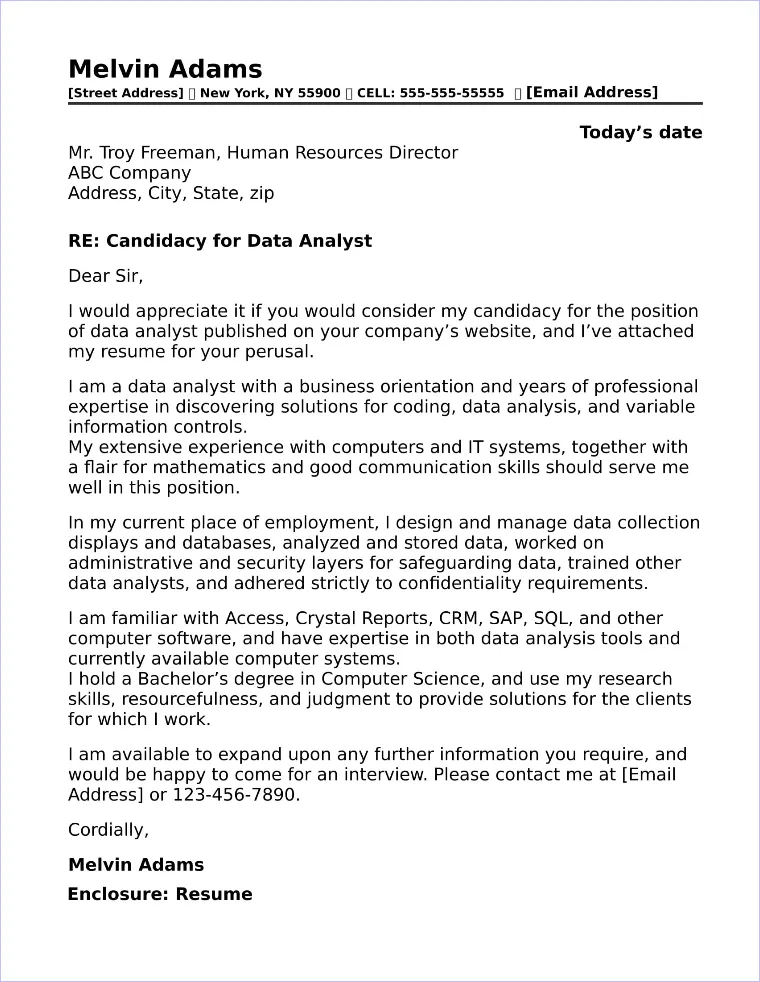
Whenever possible, quantify your achievements with numbers and metrics. Instead of saying you improved a process, say you improved it by 15%. Instead of stating you saved the company money, specify how much. Quantifying your accomplishments demonstrates your impact and provides tangible evidence of your capabilities. Using metrics makes your claims more credible and shows the hiring manager the value you can bring to the role. This also helps differentiate you from other applicants.
Providing Specific Examples
Use the STAR method (Situation, Task, Action, Result) to structure your examples. Describe the situation, the task you faced, the actions you took, and the results you achieved. This format provides a clear, concise narrative that highlights your skills and accomplishments. The STAR method is an effective way to showcase your problem-solving skills and demonstrate how you can deliver results. By detailing the context, your role, and the outcome, you give the hiring manager a clear understanding of your capabilities.
Tailoring Your Cover Letter
Customize your cover letter for each job application. Review the job description carefully and identify the key requirements. Then, tailor your cover letter to highlight the skills and experiences most relevant to the role. Avoid using a generic cover letter. Demonstrate that you understand the company’s needs and how you can contribute to their success. Tailoring shows that you have invested time and effort in your application and are genuinely interested in the position. This will make your application more memorable and impactful.
Researching the Company
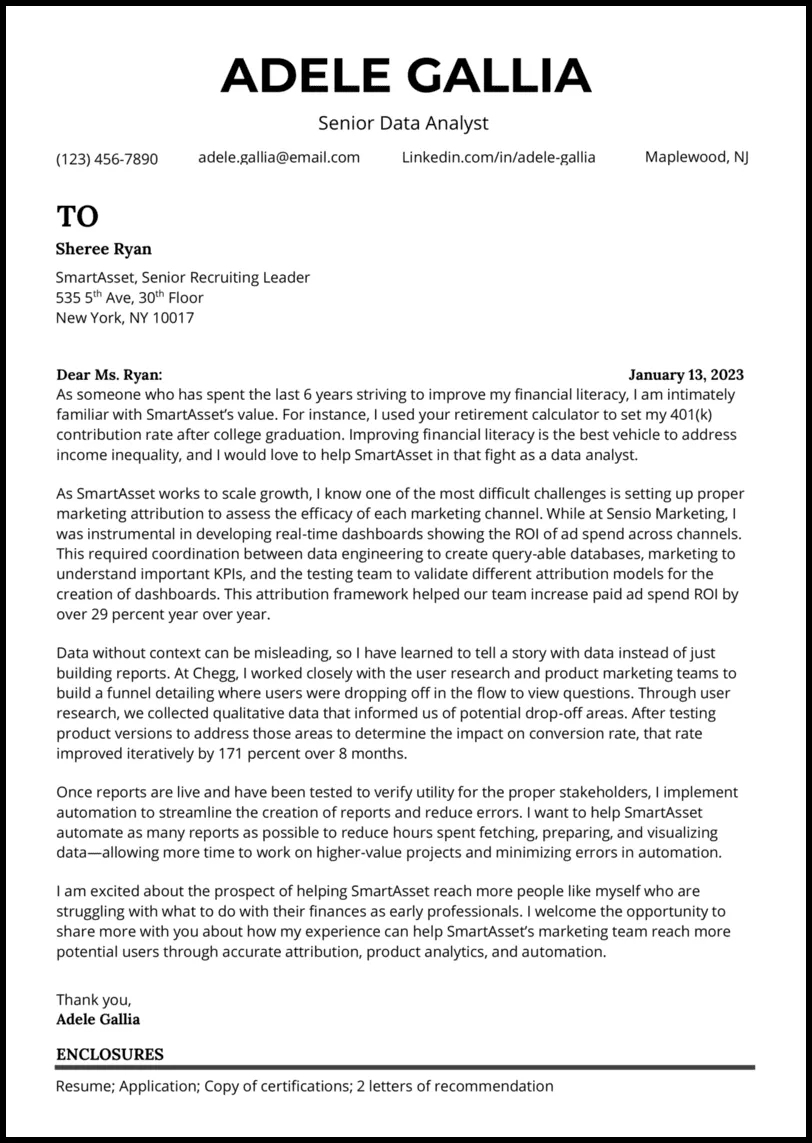
Before writing your cover letter, research the company. Understand their mission, values, and recent projects. Demonstrate your knowledge of the company in your cover letter by mentioning specific projects or initiatives that interest you. This shows your genuine interest and that you’ve taken the time to learn about the organization. Mentioning how your skills and experience align with the company’s goals will make your application more compelling.
Matching Skills to Job Requirements
Carefully review the job description and match your skills and experiences to the required qualifications. Use the same keywords and phrases from the job description in your cover letter. This helps the hiring manager quickly see how your skills align with the role. Providing specific examples that demonstrate how you meet the requirements makes your application stronger. Don’t just list your skills; explain how you’ve used them to achieve results.
Formatting & Presentation
Use a professional and easy-to-read font, such as Arial or Times New Roman, with a font size between 10 and 12 points. Keep your cover letter to one page. Use clear headings and bullet points to break up text and make it easy to scan. Use proper grammar and spelling, and ensure the formatting is consistent throughout the document. A well-formatted cover letter demonstrates your attention to detail and professionalism. Ensure the presentation is clean, organized, and visually appealing.
Proofreading and Editing
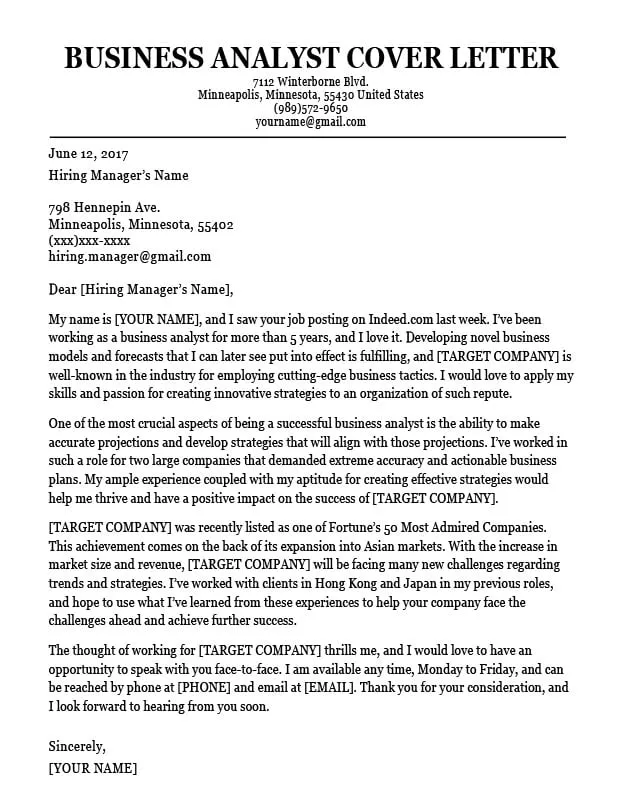
Proofread your cover letter multiple times for any errors in grammar, spelling, or punctuation. Errors can undermine your credibility and make a negative impression. Read your cover letter aloud, or have a friend or colleague review it. Consider using grammar and spell-checking tools to help catch any mistakes. A polished cover letter shows that you care about the details and are committed to presenting yourself in the best possible light.
The Art of a Strong Closing
The closing of your cover letter is your final chance to leave a lasting impression. Express your interest in the role and reiterate your key qualifications. Make sure your closing is confident and professional. There are a few key things to include in your closing to maximize its impact.
Expressing Enthusiasm
Express your genuine enthusiasm for the opportunity. Let the hiring manager know why you’re excited about the role and the company. Refer back to specific aspects of the job description or the company’s mission that resonate with you. This shows your sincere interest in the position and demonstrates your desire to be part of the team. Your enthusiasm can set you apart from other candidates.
Call to Action
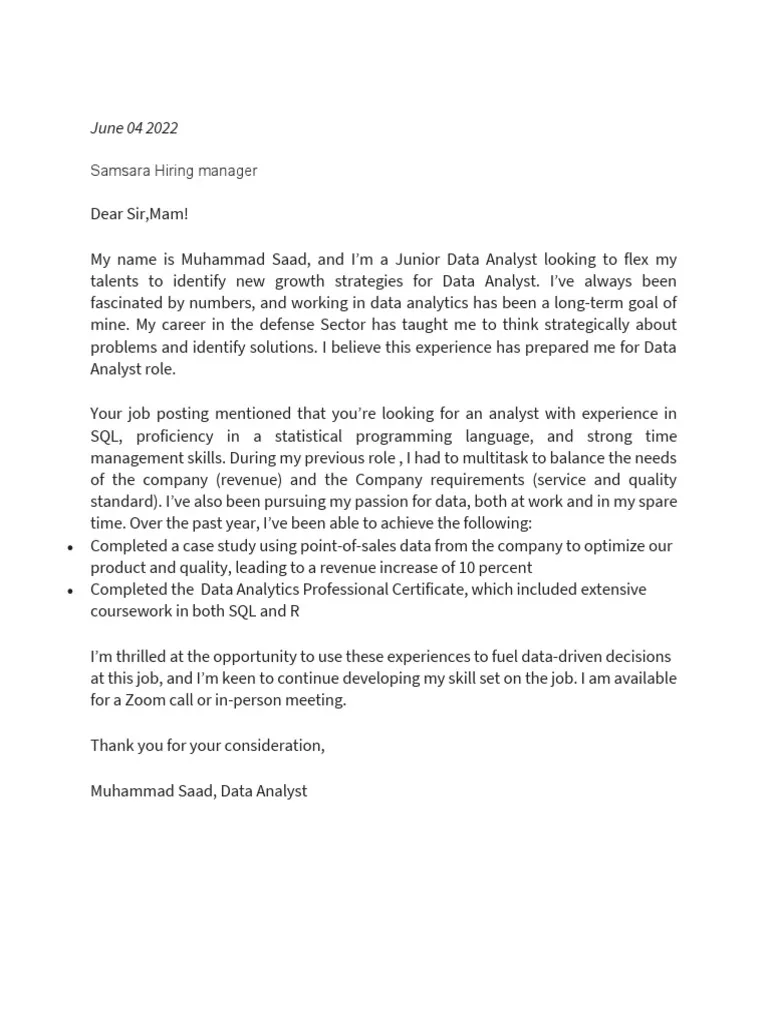
End with a clear call to action. State that you are eager to discuss your qualifications further and look forward to hearing from them soon. Provide your contact information again for easy access. A call to action encourages the hiring manager to take the next step, increasing the likelihood of an interview. Make sure to thank them for their time and consideration.
